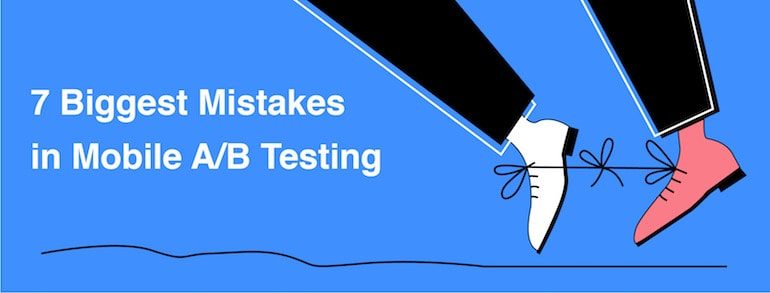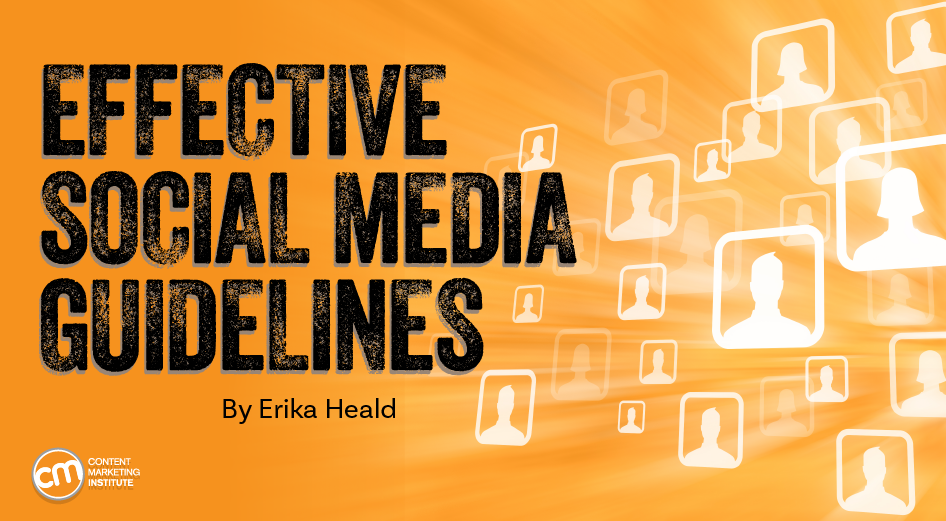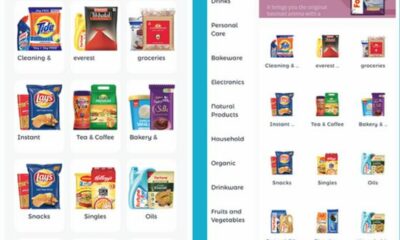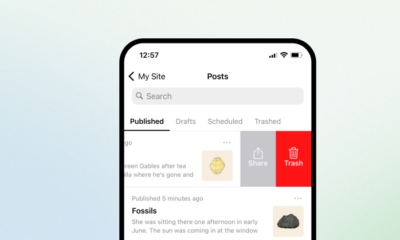MARKETING
Mobile A/B Testing: 7 Big Errors and Misconceptions You Need to Avoid

It’s no secret that marketing overall rests largely on data. The same applies to mobile marketing and user acquisition. In this domain, choosing the right product page elements for the App Store and Google Play can make a crucial difference to the success of an app or mobile game. Mobile A/B testing is a tool that helps to make that choice based on data.
However, how many times have we heard the argument that A/B testing doesn’t bring the desired results, or that someone is not sure they run mobile experiments right? This often happens due to some common mistakes and misinterpretation of data. In this post, I will cover the biggest mistakes and misleading conclusions in mobile app A/B testing, knowledge of which will help you achieve success.
1. Finishing an experiment before you get the right amount of traffic
This is one of the most common mistakes in mobile A/B testing. In case you are an adherent of classic A/B testing, finishing an experiment before you get the necessary amount of traffic – sample size – presents a risk that you will get statistically unreliable results.
To get reliable evidence, you need to wait until the required amount of traffic is reached for both A and B variations.
If you are looking for an alternative to the classic option, resort to sequential A/B Testing. You will need to start with specifying the baseline conversion rate (conversion rate of your current variation), statistical power (80% by default), significance level and the Minimum Detectable Effect (MDE) – this will help you determine the sample size.
The significance level is 5% by default, which means the error margin will not exceed 5%. You can customize this value along with the MDE – the minimum expected conversion rate increase you would like to see. Note: don’t change the significance level, MDE or statistical power after you’ve started an experiment.
With sequential A/B testing, the algorithm will constantly check your variations on significance level and the amount of traffic left until the completion of the experiment. That’s how it works on our SplitMetrics A/B testing platform.
Lesson learned: if you run classic A/B tests, don’t finish an experiment until the right amount of traffic is reached. Or else, try sequential A/B testing, and you will be able to check the results at any time.
2. Finishing an experiment before 7 days have passed
Why do you have to wait for at least seven days? Well, various apps and mobile games experience peaks in activity on different days during the week. For example, business apps watch bursts in activity on Mondays, while games are most popular among users on the weekends.
For getting reliable results from mobile A/B testing experiments, you should capture peak days of your app during an experiment. Otherwise, you run the risk to jump to conclusions.
For example, you run tests for a task management app. You start an experiment on Wednesday and finish it on Saturday. But most of your target audience is utilizing your app on Mondays, so you will just miss the point since the surge of activity hasn’t got into the experiment period. Or vice versa, you’ve been running A/B tests for your racing game from Friday to Sunday: on the game’s peak days. In this case, the results will also be inadequate.
So, even if you’ve avoided the number one mistake and have already got the required amount of traffic on the very first day, don’t stop the experiment until seven days have passed.
Lesson learned: due to weakly peaks in activity that vary for each mobile game or app, do not finish an experiment before the complete (seven-day) cycle has passed.

3. Testing too small changes in design
One more common mistake in mobile A/B testing is comparing variations that look almost the same due to minor differences in design.
If the only difference between the mobile app icons you are testing is a blue background color instead of the light blue, or you have added a tiny detail to another screenshot variation, you are definitely in trouble. Users just do not notice such small changes.
In this case, both variations will show the same result, and it’s perfectly normal. So if you ever tried to run the app store A/B tests but then gave up on them, since variations performed equally, it’s time for reflection on what went wrong. Maybe your variations looked pretty much the same.
To make sure you are A/B testing a significant change, show both versions to your family or friends. Let your colleague look at each variation for 3-5 seconds. If they don’t know the difference, you’d better redesign your visual assets.
Lesson learned: in case you test variations with too small changes in design, you should expect that they will show the same result. Such changes are too insignificant for users, so it’s better to test app icons and screenshots that differ markedly from each other.
4. Your banner ads have the same design as one of the app store visual assets
If you use a third-party mobile A/B testing tool, like, for example, SplitMetrics, you buy traffic and place banners on ad networks. The point is that such a banner shouldn’t look like one of the visual assets you are testing, whether it is a screenshot or the same elements on an icon.
For example, you run experiments for your educational app. You design a banner that has the same element, as the icon from the variation A, while the variation B is completely another icon. Variation A will show the higher conversion rate, since it has the same design, as the banner users initially saw and clicked on.
Studies show that if people see something repeatedly, their brain processes information faster, which brings them a sense of liking. You can read more about it here. So, users tend to unconsciously tap on the already familiar images.
Lesson learned: when working on banner ads, make the design as neutral as possible. The banner design should not coincide with the design of your app’s icon or screenshots variations.
5. Testing several hypotheses at once
It makes no sense to make multiple changes and test them within the same experiment. Some mobile marketers draw the wrong conclusions after running a test, since they have made several changes and, in fact, cannot know what exactly affected the result.
If you have decided to change the color of your app store product page screenshots, create one or a few variations with another background color and run a test. Don’t change the color, order, and text on the screenshots at the same time. Otherwise, you will see the winning variation (let it be the variation B), and you will have no clue if it is the color change that actually worked.
Lesson learned: if you test multiple hypotheses at once, you will not be able to understand which one of them is correct.

6. Misinterpreting the situation when two variations are the same but you get a winner
When running A/A tests, you might be confused when an A/B testing tool is showing the winning variation among two identical assets. In particular, this is common for the Google Play Store’s in-built tool for running experiments.
On the SplitMetrics platform, at the 5% level of significance, in such a case, you will see that the result is insignificant.
Small differences between two exactly the same variations are pure coincidence. Different users reacted a little differently. It’s just like flipping a coin: there is a 50-50 chance you’ll get heads or tails, and there is a 50-50 chance one of the variations will show a better result.
To get a statistically significant result in a situation like this, you should get results from absolutely all users, which is impossible.
Lessons learned: if you get the winning variation when testing identical assets, there is nothing wrong with your A/B testing tool, it’s just a coincidence. However, with sequential A/B testing, you’ll see that the result is insignificant.
7. Getting upset when a new variation loses to the current one
Some mobile marketers and user acquisition managers get disappointed when an experiment shows that the current variation wins, which they didn’t expect, and start wasting a budget on more paid traffic in the hope that the new variation will eventually win.
There is no reason to feel bad if your hypothesis has not been confirmed. If you had changed something on your app store product page without testing, you would have lost a part of your potential customers and, consequently, money. At the same time, having spent money on this experiment, you have paid for the knowledge. Now you know what works for your app and what doesn’t.
Lesson learned: everything happens for a reason, and you should not be sorry if your A/B test hasn’t confirmed your hypothesis. You now have a clear vision of what assets perform best for your game or app.
MARKETING
Updates to data build service for better developer experiences

Optimizely Feature Experimentation users can now benefit from an average of 87% faster data file updates. The ability to generate data files in a faster and more predictable manner enables our customers to make updates to feature flags and experiments more quickly and reliably.
- Datafile build service – Performance, stability
- Webhooks by environment – Lower latency across all environments. Push notification that a new datafile is ready
- Secure environments – Security
Key features
- Smoother workflow
It lets you update feature flags and experiments faster and more consistently as a seamless workflow step. - Better developer experience
Developers can expect faster and more predictable feedback when configuring feature flags during local development. - Faster execution
Product teams benefit from “kill switches” to roll back problematic features and flawed experiments to protect user experience and conversion rates.
Finally…
Speed, performance, and usability are key to delivering a better experience, and as such we are always striving to improve the performance of back-end services. Our improved datafile build service enables you to deliver feature flags and experiment changes to your end-users more quickly and reliably.
Optimizely Feature Experimentation generates a JSON datafile that represents the state of an environment in a customer’s Feature Experimentation project, this datafile is polled for and consumed by our SDKs to enable user-level decisions and tracking.
With our new datafile build service, Feature Experimentation customers will experience better performance and reliability when delivering feature flags and experiment changes to end-users.
MARKETING
The Ultimate Guide to Email Marketing

Email is more than just an informative message; it is a sales tool that helps the brand reach its potential customers. That’s why email marketing continues to find a place in many brands’ marketing strategies. Also considered the most effective medium to reach a potential audience, email marketing is estimated to proliferate to more than 370 billion emails per year by 2025.
Statista’s recent report revealed that there would be a rapid and consistent increase in the use of email marketing as a promotion tool. Another report published on Financesonline.com projects that there will be 4.5 billion email users by 2024 compared to 4 billion in 2020. The rapid increase in the use of email has forced businesses to incorporate them into their marketing strategies.
Therefore, companies that want to attract customers to their brand organically must be aware of the core fundamentals of email marketing. Therefore, in the succeeding part of the article, we will understand in-depth email marketing. Everything will be discussed in the following paragraphs, from its meaning to tools.
The Ultimate Guide To Email Marketing
Experts believe that customers love to hear from the brand they love; that’s why they choose to subscribe to the monthly and weekly newsletters that companies send to make them aware of new products, among other things. So, to understand how to formulate an effective email marketing message, it is important to understand what email marketing is.
What Is Email Marketing?
Often digital marketing definition includes email marketing in it. So, what is email marketing? It is a process that revitalizes email as a promotion and advertising tool. Through email marketing, potential customers learn about new products, services, discounts, and offers, among other things. Therefore, it is an effective marketing medium that bridges the gap between the brand and the customer. It also allows brands to communicate with customers directly.
Due to its umpteen benefits and easy-to-use interface, email marketing has become one of the most popular marketing strategies globally. Large, medium or small businesses can implement email marketing into their brand promotional strategy because of the reasons listed below.
Why Is Email Marketing Important?
- It is a cost-effective marketing strategy compared to outdoor, news, and television advertisements.
- It has a higher return on investment (ROI) and helps brands reach a wider audience.
- It is an effective medium to reach new customers with minimal resources.
- It easily integrates into different marketing channels.
- It offers personalization by assisting in creating targeted messages for specific customers.
Email marketing is a powerful promotional tool that helps brands successfully persuade their customers. Its unique features and characteristics force customers to take action on them by reading, deleting, or archiving them. Therefore, it is too hard to avoid email. To effectively formulate an email marketing strategy, a marketing manager should follow a few steps that we will be discussing in the next part of the article.
How To Formulate An Email Marketing Plan?
Follow these steps to formulate an effective email marketing plan successfully:
- Understand your audience’s needs
- Include a call-to-action
- Decide the content of the email
Formulating an email marketing plan is an elaborative process requiring the marketing manager to perform various steps to understand the target audience. Once you have understood your audience’s needs, it is easy to formulate the content of the email. Unfortunately, brands often concentrate on writing email content that aligns with the needs of their audience. It is effective but compromises the organization’s goal. So, while formulating an email marketing plan, try to integrate business goals and audience needs into the strategy to get more effective results.
Different types of email marketing incite different results. So, depending on the market, audience, and business size, a company can decide the email marketing type. Below are some of the popular types of email marketing prevalent in the current times.
What Are The Types Of Email Marketing?
• Newsletters
Newsletters are a significant way of informing the audience about new products or services launched by a brand. In addition, it is used to help the users understand the brand better. Therefore, they follow a strict delivery schedule, which cannot be shifted or changed frequently.
• Welcome emails
Welcome emails are sent to new customers or potential users whom the brands wish to turn into consumers. This type of email marketing aims to educate audiences about the brand, its products, services, and brand goal, among other things.
• Promotional emails
Promotional emails’ main focus is to persuade customers to buy a product or service. Therefore, they are designed to influence the audience to buy the product.
• Sponsorship emails
Brands can use different types of email marketing to reach the audience. Sponsorship email is summarized as the process of promoting a product and service on another brand’s email ad space. In addition, it is used to attract new customers to the products.
Email marketing is a marketing activity that can be intimidating and strenuous for marketing managers. Therefore, brands use many online tools to automate and classify email marketing processes. In the last part of the article, we will discuss the tools of email marketing that helps brands promote their product or service effectively.
What Are The Tools Used For Email Marketing?
Here are some marketing tools that brands commonly use.
- Mailchimp
- Campaign Monitor
- Sendinblue
- Easysendy
- SendPulse
Besides email marketing, there are different types of digital marketing strategy that helps in reaching the targeted audience effectively. To understand the intricate details of different digital marketing strategies, marketing managers can take digital marketing certification courses offered by Emeritus India in association with renowned Indian and international universities.
MARKETING
How To Protect Your People and Brand

Your lack of social media guidelines could discourage employees from becoming brand advocates and even applicants from joining your company. I speak from personal experience.
When I first joined LinkedIn, my profile said I worked for a “Bay area Fortune 500 financial services company” instead of noting its name and linking to the company page. Soon, many of my colleagues’ profiles said the same thing.
You see, our organization was trying to figure out its social media policies within the confines of a highly regulated industry. It blocked access to any website with a social component — including YouTube. When employees were asked about using social media on their own time and devices, the company’s initial guidance was they didn’t want them using social media at all.
Well, that wasn’t going to happen. Instead, thanks to lengthy conversations with my legal and compliance colleagues, I hit upon a solution: I scrubbed any mention of my employer in all my public profiles.
Why employee social advocacy matters
Why do employee brand advocates matter? Because people are increasingly wary and distrustful of brand and government claims and prefer input from their peers.
The Edelman Trust Barometer underscored this message. In its 2024 iteration, it found people were concerned that the media (64%) and business leaders (61%) are purposely trying to mislead people by saying things they know are false or gross exaggerations.
This shift in trust becomes a competitive advantage for brands that cultivate thousands of eager brand ambassadors, but this requires documented employee social media guidelines to not only allow your team members to thrive on social but to protect your brand from legal risks.
Take a responsible approach to workplace social media policies
Whether you like it or not, employees will talk about your company on social media, and it’s their federally protected right to do so.
Many businesses react with fear and develop extensive restrictions around what employees can or cannot say online in their company social media guidelines. They require employees to agree to a list of don’ts and end the conversation.
However, innovative companies increasingly prioritize employee advocacy, seeing both employee retention and bottom-line advantages. A recent case study showed tech leader Salesforce activated about a third of its 73,000-person employee base as brand advocates, resulting in a 2,000% ROI on its social ambassador program.
Social media guidelines for employees serve as guardrails for online activity and show employees you want them to be engaged online, helping to build on your company’s social media success.
Follow the essentials for your guidelines
The length of your company’s social media guidelines is less important than their accessibility and quality. Ensure any employee can understand the guidelines. Create one-pagers or cheat sheets for specific activities, like training or unique campaigns.
At a minimum, all employee social media guidelines should include the following elements:
- Brand’s purpose on social media — Document the brand’s purpose for each social platform. Whether for recruitment, content amplification, customer advocacy, etc., the guidelines should explain why the company exists on each channel and how employees can support that purpose.
- Company style guide — List any trademark needs and spelling of company products and services so that employees correctly present the brand. You should also define your brand personality and any language considerations.
- Access to shared brand asset folder — Create a central folder employees can access for company logos, how-to’s, shared FAQs, branded profile headers for social sites, and more. Consider creating a list of preferred hashtags and their purposes, especially with company hashtags such as Dell’s #IWorkForDell or IBM’s #ProudIBMer. Keeping this information in one place increases the likelihood that employees will stay on brand.
For a deeper look at these areas, including resources to help you define your social media goals, check out my article, Why Social Media Guidelines are the Key to Unlocking Employee Brand Advocacy.
Use guidelines as a brand defense
The stakes can be high for enterprises when employees use their social media channels in unapproved ways, and savvy companies know the importance of developing extensive social media guidelines.
Get ahead of potential issues and address these all-too-common social media pitfalls in your employee social media guidelines:
- Legal concerns — Make it incredibly clear at the start of all projects what is and is not approved for social sharing. Also, while many people differ on the use of “views-are-my-own” disclaimers, large enterprises should discuss whether they want employees to have such a clause on their accounts.
- Unsanctioned brand accounts — When your company spans your country or the globe, employees may create localized accounts. Address this by listing all official corporate accounts in your social guidelines and asking team members to use only those for brand-related matters.
Consider having a social media request form that allows employees to suggest new accounts or content. This way, their enthusiasm can be better harnessed with a conversation versus an email request to delete the rogue account.
- Departed employees — As employees move on to different career opportunities, they may forget to update their profiles to note they are no longer with your company. This could cause confusion when they start posting content about their new companies or when customers search LinkedIn for staff. While you cannot force individuals to change their social account information, you can at least make the request a part of the exit or off-boarding process.
Enterprise social media guidelines examples
Many brands make their company’s social media guidelines public. These examples can serve as great models for your company’s guidelines. Keep in mind, though, that these are just public-facing documents. The organizations may have more expansive guides for internal audiences.
Each of these three examples has unique elements, but they boil down to address the same point — not everyone knows how to act online.
- Stanford University: These extensive guidelines have a small yet informative section on an individual employee’s social media use. The main points cover how employees are responsible for what they say on social and how they should think about how their social engagement may affect the organization’s reputation. While this may seem general, the policy also links to the university’s information security and privacy policies. What truly sets this social policy apart is its thoroughness in discussing using social on behalf of the organization.
- IBM: What stands out in this guide (no longer available on IBM’s public site) is that employees are clearly encouraged to engage in industry conversations online and have their own blogs. “Bring your own personality to the forefront” is part of the company’s guidelines, with the necessary caveat to not use offensive or harmful language.
- Dell: This policy is distilled into five easy-to-digest bullet points for employees and directs them to the Dell social media team email for additional questions. It tackles the issue of rogue accounts, noting that an account created for Dell may be considered Dell property and that accounts cannot be created to ride on the success of Dell’s corporate accounts.
Educate employees on the social media guidelines
As part of every employee’s onboarding, a member of the social team should discuss the company’s social media policies and guidelines and help any new hires set up their channels in a brand-relevant way.
To maintain and grow awareness of the company’s social media policies, get creative:
- Host lunch-and-learn conversations. These informational meetings allow employees to enjoy their food while you discuss topics relevant to your company’s social media channels. If your company has multiple offices, hold a video meeting. Record the conversation to provide a playback file for those who cannot attend.
- Post social media office hours. If employees are hesitant to ask questions during meetings or regular day-to-day operations, give them a safe place for in-depth, one-on-one time by hosting regular social media office hours. This strategy establishes your social team as a helpful resource rather than the brand police.
- Send social media amplification emails. Email employees regularly to share content you want them to amplify. Include suggested text for easy plug-and-play for busy employees. You cannot rely solely on email, though, as internal emails have an average open rate of 76%.
- Create a social media Slack or Teams channel. If Slack or Microsoft Teams is where work happens in your organization, share all your social content there as well.
- Hold employee meetings. Create regular update/reminder slides employees can include in presentation decks during company all-hands, all-team meetings, or individual group or office meetings.
- Use the company intranet. An intranet can be a great resource for increasing productivity and distributing information to employees. Share updates to the social media policies and use it as a hub for all your social resources.
- Develop training videos. With more internal resources available, enterprises can explore using video to educate employees on topics related to social. Research has found that viewers retain 95% of a message when they watch it in a video compared to just text, so the time commitment to create a video could pay off in message retention.
Continue success with employee social media guidelines
In addition to the core company social media guidelines, ensure that employees can access the brand voice so they can mirror your brand’s language and engage with content that you think best emulates what you want to see your employees doing on social media platforms.
Ongoing monitoring and education are the keys to getting the most out of your guidelines. But with an eager brand advocate base on your side, you’re more likely to see the social ROI you need to achieve your goals.
Updated from a January 2020 article.
HANDPICKED RELATED CONTENT:
Cover image by Joseph Kalinowski/Content Marketing Institute
-

 MARKETING6 days ago
MARKETING6 days agoHow Tagging Strategies Transform Marketing Campaigns
-
SEARCHENGINES7 days ago
Daily Search Forum Recap: May 3, 2024
-

 MARKETING7 days ago
MARKETING7 days agoTinuiti Recognized in Forrester Report for Media Management Excellence
-

 SEO7 days ago
SEO7 days agoGoogle Performance Max For Marketplaces: Advertise Without A Website
-

 SEARCHENGINES6 days ago
SEARCHENGINES6 days agoThe Industry Mourns The Loss Of Mark Irvine
-

 MARKETING4 days ago
MARKETING4 days agoA Recap of Everything Marketers & Advertisers Need to Know
-

 SEO6 days ago
SEO6 days agoWhat Is Social Listening And How To Get Started
-

 MARKETING5 days ago
MARKETING5 days agoThe key to correcting the C-suite trust deficit















